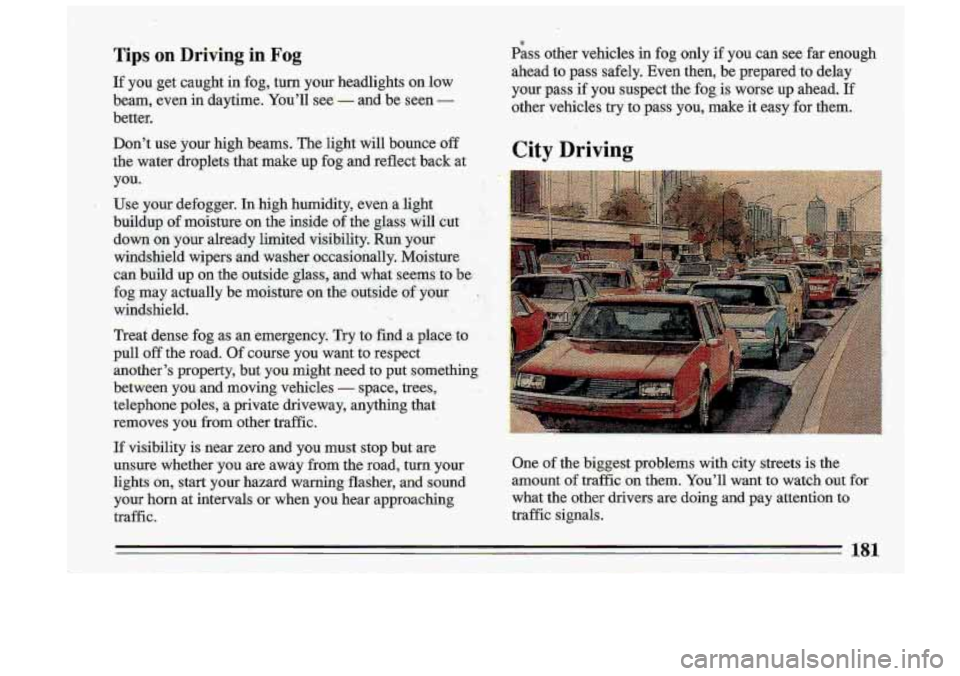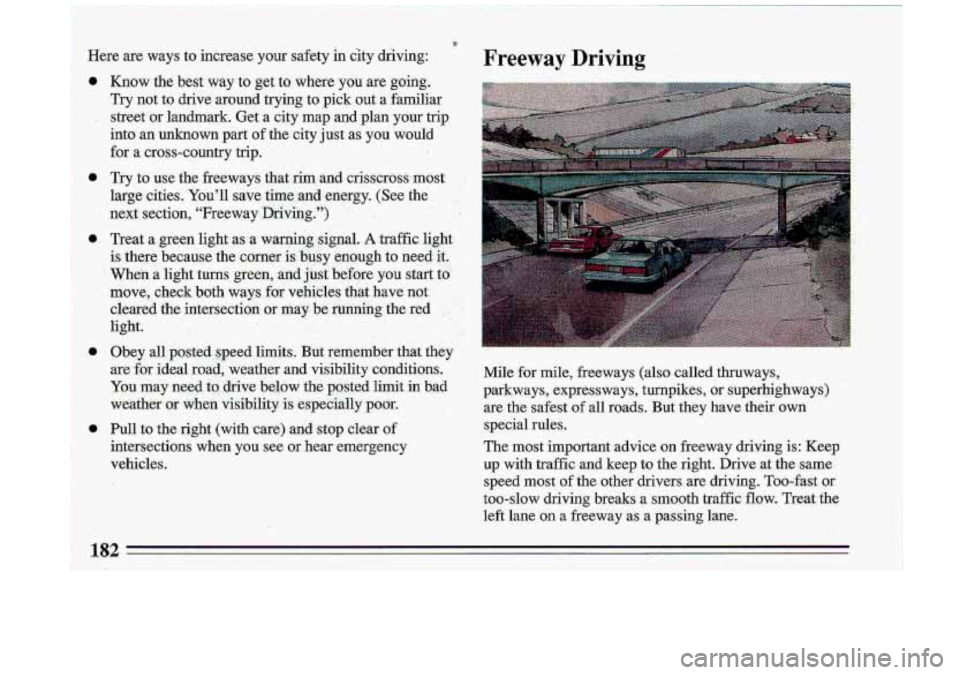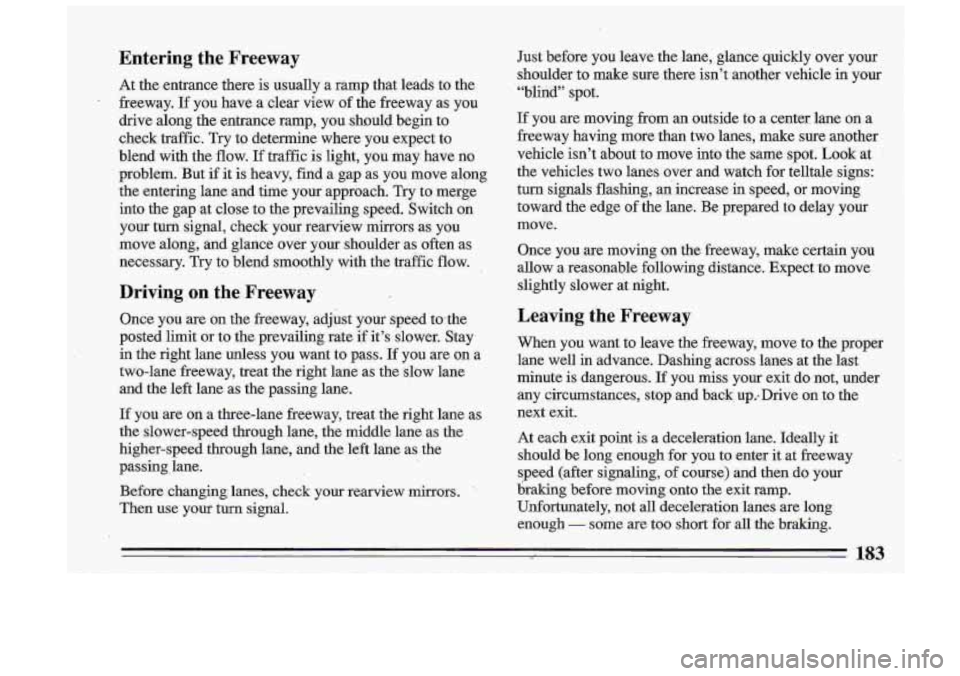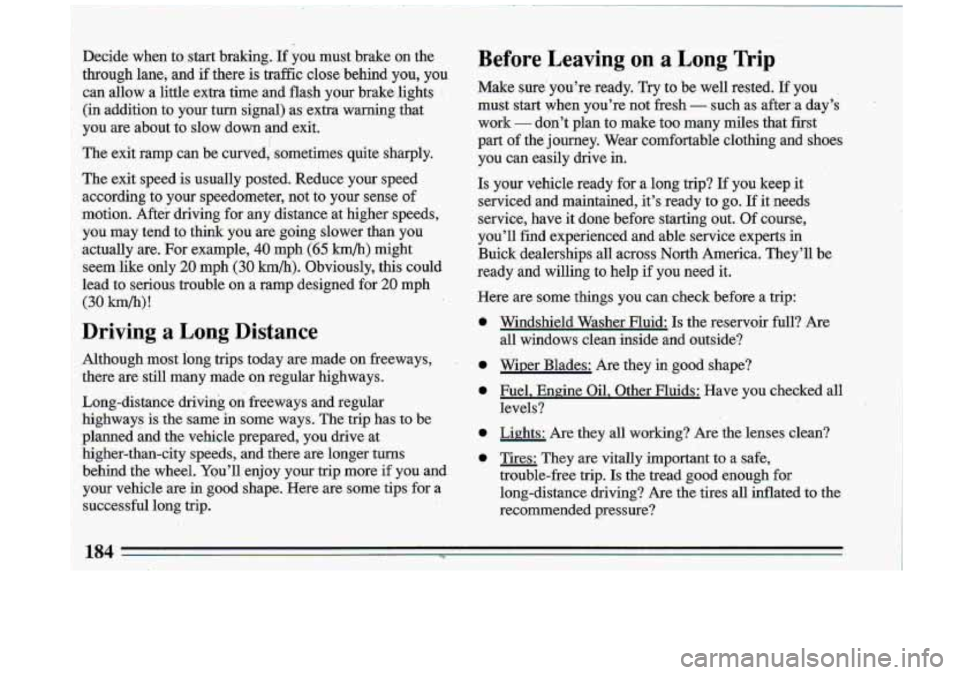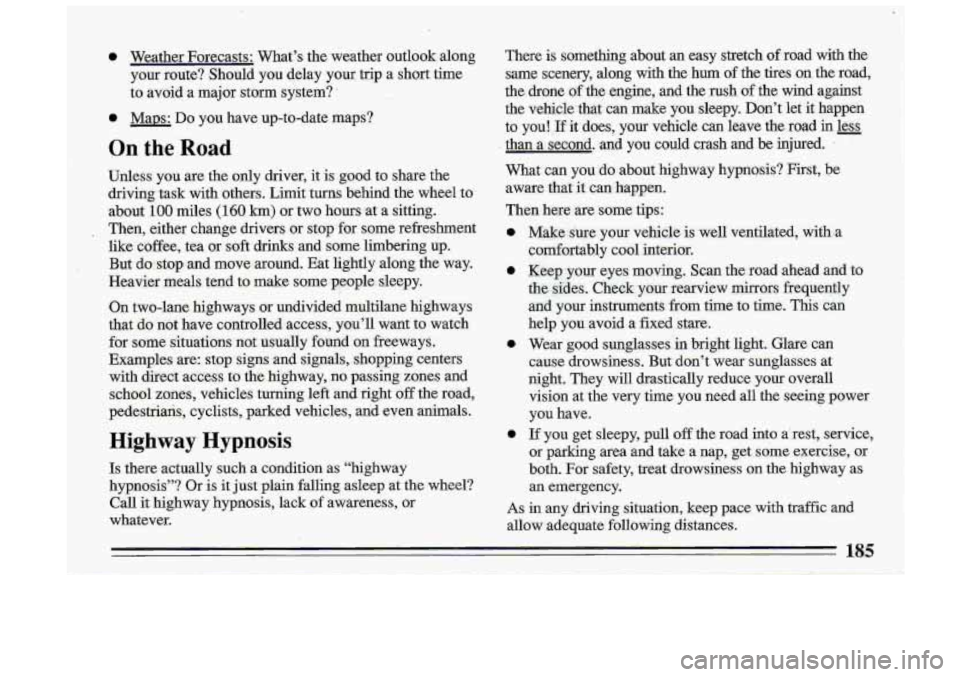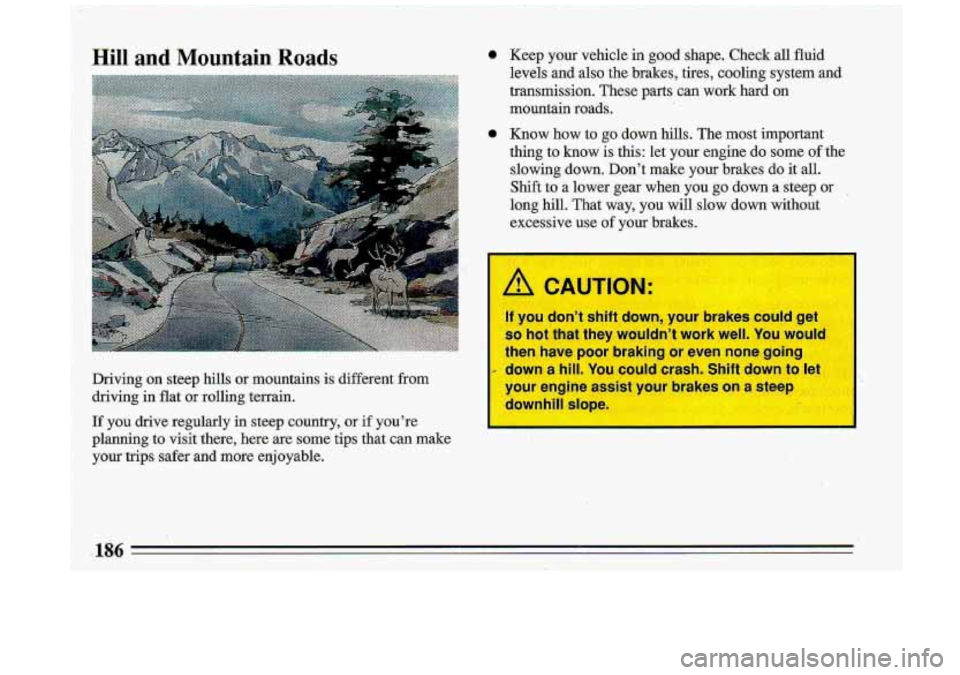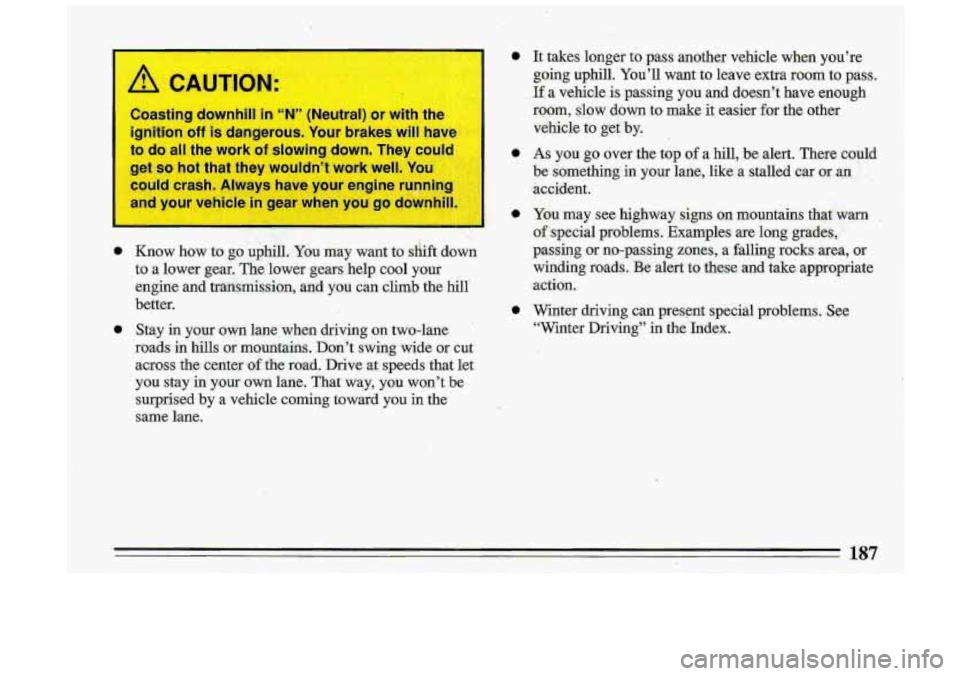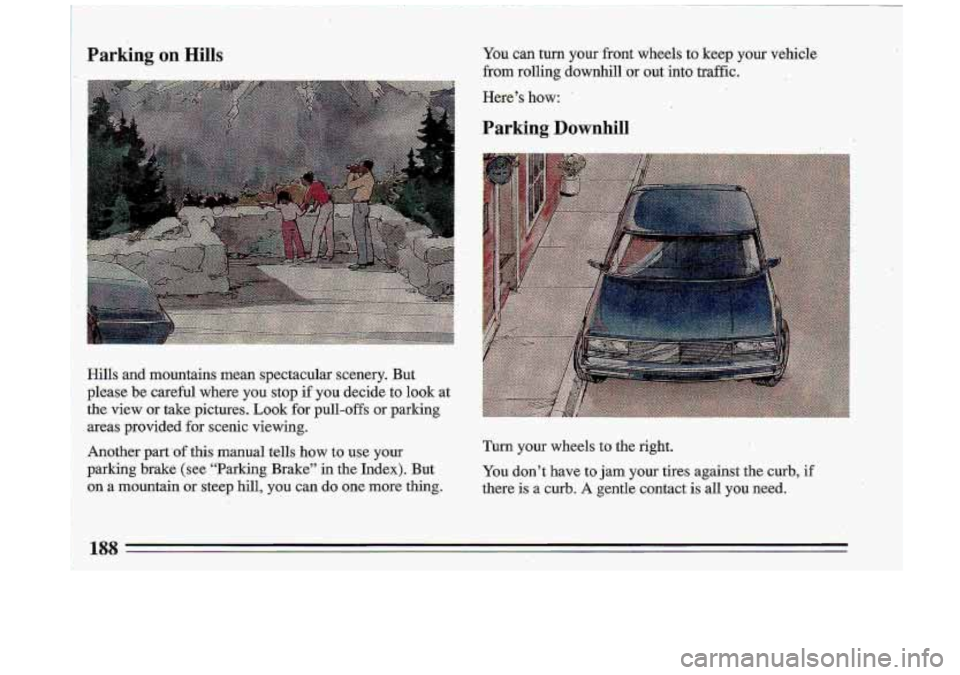BUICK ROADMASTER 1993 Owners Manual
ROADMASTER 1993
BUICK
BUICK
https://www.carmanualsonline.info/img/43/57702/w960_57702-0.png
BUICK ROADMASTER 1993 Owners Manual
Trending: fuel additives, oil, Rest, maintenance, clock, climate control, oil viscosity
Page 181 of 340
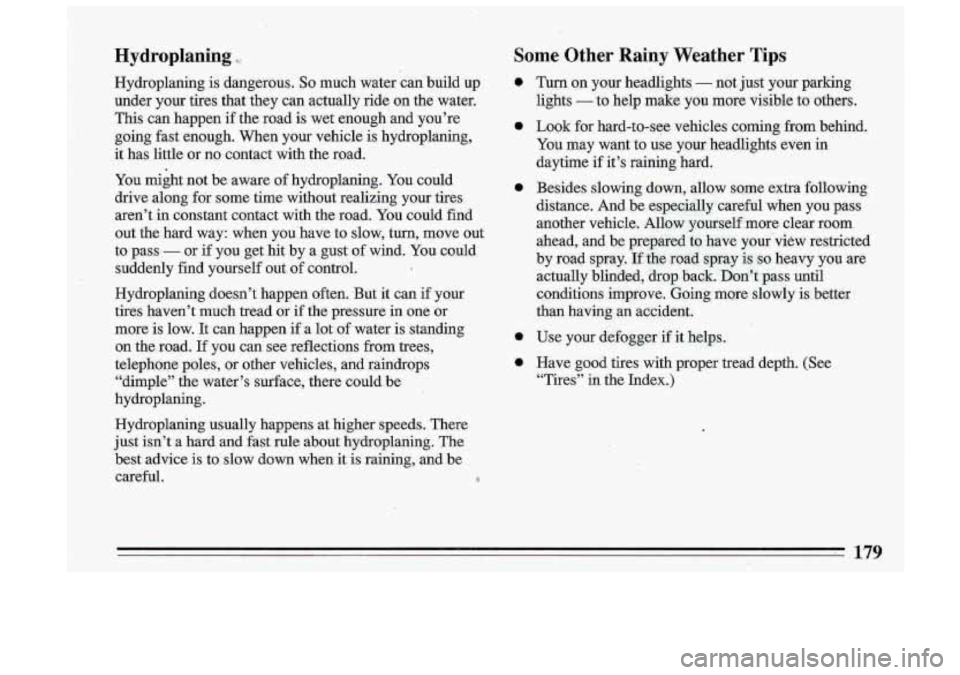
Hydroplaning Some Other Rainy Weather Tips
Hydroplaning is dangerous. So much water can build up
under your tires that they can actually ride
on the water.
This can happen if the road is wet enough and you’re
going fast enough. When your vehicle’ is hydroplaning,
it has little or no contact with the road.
You might not be aware of hydroplaning. You. could
drive along for some time without realizing your tires
aren’t in constant- contact with the road. You could find
out the hard way: when you have to slow, turn, move out
to pass - or if y-ou get hit by a gust of wind. You could
suddenly find yourself out of control.
Hydroplaning doe.sn’t happen. often. But it can if your
tires haven’t much tread
or if the pressure in one or
more is low.
It- can happen if a lot of water is standing
on the road. If you can see reflections from trees,
telephone poles, or other vehicles, and raindrops
a
“dimple” the water’s surface, there could-be
hydroplaning.
Hydroplaning usually happens at higher speeds. There
just isn’t a hard and fast rule about hydroplaning. The
best advice is to slow down when it is raining, and be
careful.
f
0
0
0
a
- 179
Page 182 of 340
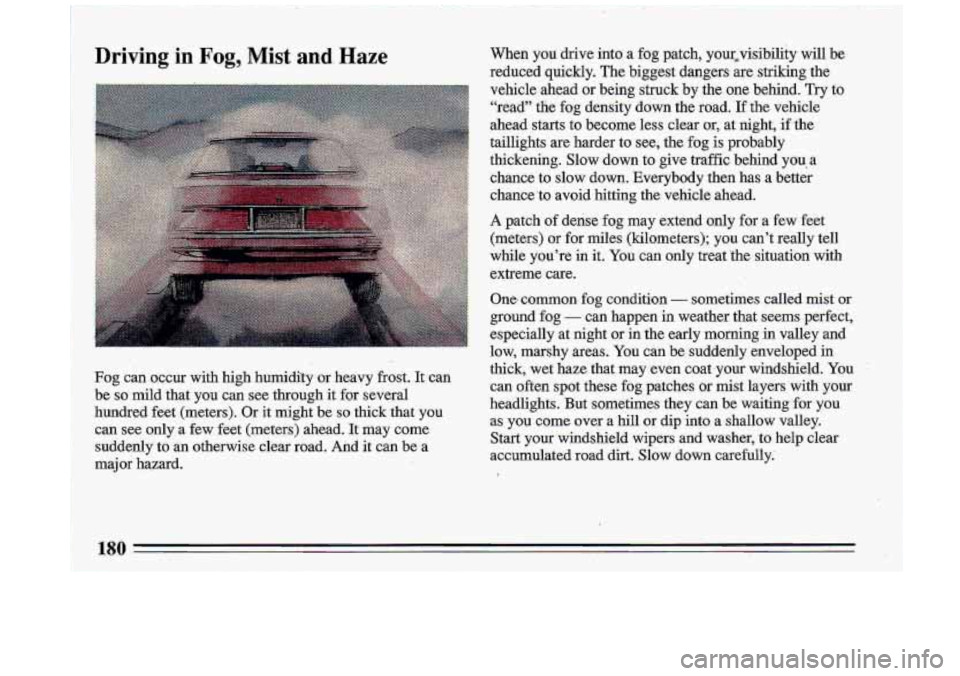
Driving in Fog, Mist and Haze When you drive into a fog patch, your$sibility will be
reduced quickly. The biggest dangers
are striking the
vehicle ahead or being struck by the
one behind. Try to
‘‘read” the fog density down the road.
If the vehicle
ahead starts to become less clear
or, at night; if the
taillights are harder to see,
-the fog is probably
thickening. Slow down to give- traffic behind you. a
chance to slow down. Everybody then has a better chance.to avoid hitting the vehicle ahead.
A patch of derise fog may extend only for a few feet
(meters) or for miles (kilometers); you can’t really tell
while you’re
in it. You can only treat ‘the situation with
extreme tare.
One, common fog condition - sometimes called mist or
ground fog - can happen in weather that seems perfect,
especially at night or in the early
morning in valley and
low, marshy areas. You can be suddenly enveloped
in
thick, wet haze that may even coat ,your windshield. You
can often spot these fog patches .or mist layers with
your
headlights. But sometimes they can be waiting for you
as you come over a hill or dip into a. shallow valley.
Start your windshield wipers and washer, to help clear
accumulated road dirt. Slow down carefully.’
Fog can occur with high humidity or heavy frost. It can
be
so mild that- you can see through it for several
hundred feet (meters). Or-it might
he so thick .that you
can see only
a few feet (meters) ahead. It may come
suddenly
to an otherwise clear road. And it can be a
major hazard.
Page 183 of 340
Tips on Driving in Fog
If you get caught in fog, turn your headlights on low
beam, even in daytime. You’ll see
- and be seen -
better.
Pass other vehicles in fog only if you can see far enough
ahead to pass safely. Even then, be prepared to delay
your pass if you suspect the
fog.is worse up ahead. If
other vehicles try to pass you, make it easy for them.
*
If visibility is near zero and you must stop but are
unsuTe whether you are away
from the road, turn your
lights on, start
your hazard warning flasher, and sound
your
Born at intervals or when you hear approaching
traffic. One
of the
biggest problems with city streets is the
amount of traffic
on them. You’ll want to watch out for
what the other drivers are doing and pay attention
to
traffic signals.
181
Page 184 of 340
Free-way Driving
Mile €or mile, freeways (also called thruways,
parkways, expressways, turnpikes, or superhighways)
are the safest
of all roads. But they have their own
special rules.
The most important -advice on freeway dJiving is: Keep
up with traffic and keep
to the right. Drive at thesame.
speed most
of the other drivers are driving. Too-fast or
too-slow driving breaks
a smooth traffic flow. Treat the
left lane on
a freeway as a passing lane.
182
Page 185 of 340
Page 186 of 340
Page 187 of 340
I
!i 1 I
I
0
0
Wear good sunglasses in bright light. Glare can.
cause drowsiness.
But don’t wear sunglasses at I
night. They will drastically reduce your overall
vision at the very time you need all the seeing power
you have.
If you get sleepy, pull
off the road into a’rest, service,
or parking area and take a nap, get some exercise,
or
both. For safety, treat drowsiness on the highway as.
1
an emergency.
As in any driving situation, keep pace with traffic and
allow adequate following distances.
185
Page 188 of 340
Driving on steep hills or mountains is different from
driving in
flat or rolling terrain.
' A CAUTION:
If you don't shift down, your brakes could get
o hot that they wouldn't work well. You wou.,
..len have
poor braking or even none going
. down a hill. You could crash. Shift dowr tn Ifit
,our engine assist vnur brakes on a stec,
down hill slope.
If you drive regularly in steep country, or if you're - - -
planning-to visit there, here are some tips that can make
your
trips safer and more enjoyable.
Page 189 of 340
Page 190 of 340
PBrkiBg .. Hi&$ You can turn your front wheels to keep your vehicle
from rolling downhill or out into traffic.
Here’s how:
.,
Parking Downhill
Turn your wheels to the right.
You don’t have to jam your tires against the curb, if
there is a curb. A gentle contact is all you need.
Trending: charging, inflation pressure, windshield wipers, glove box, tow, overheating, automatic transmission fluid


